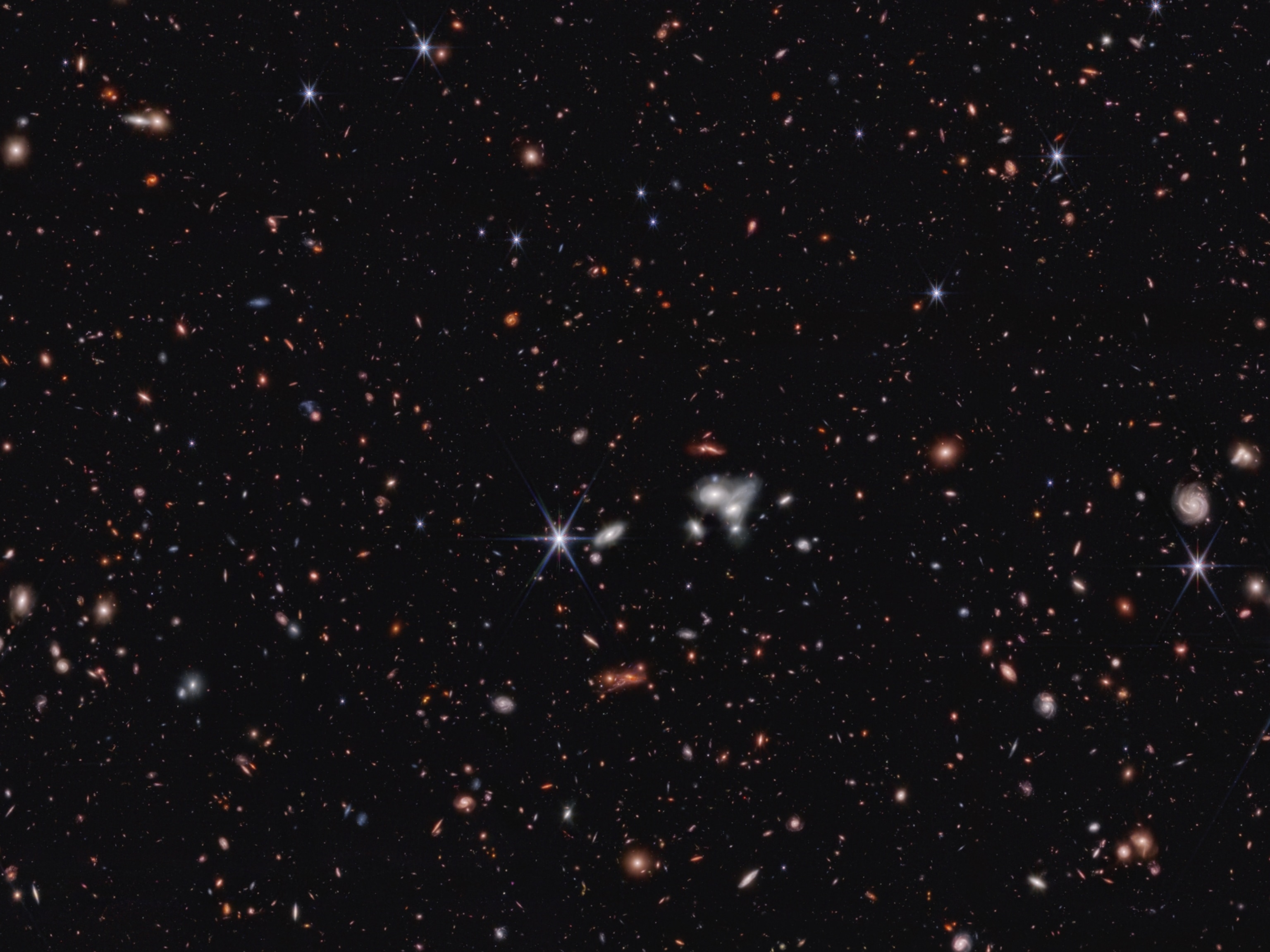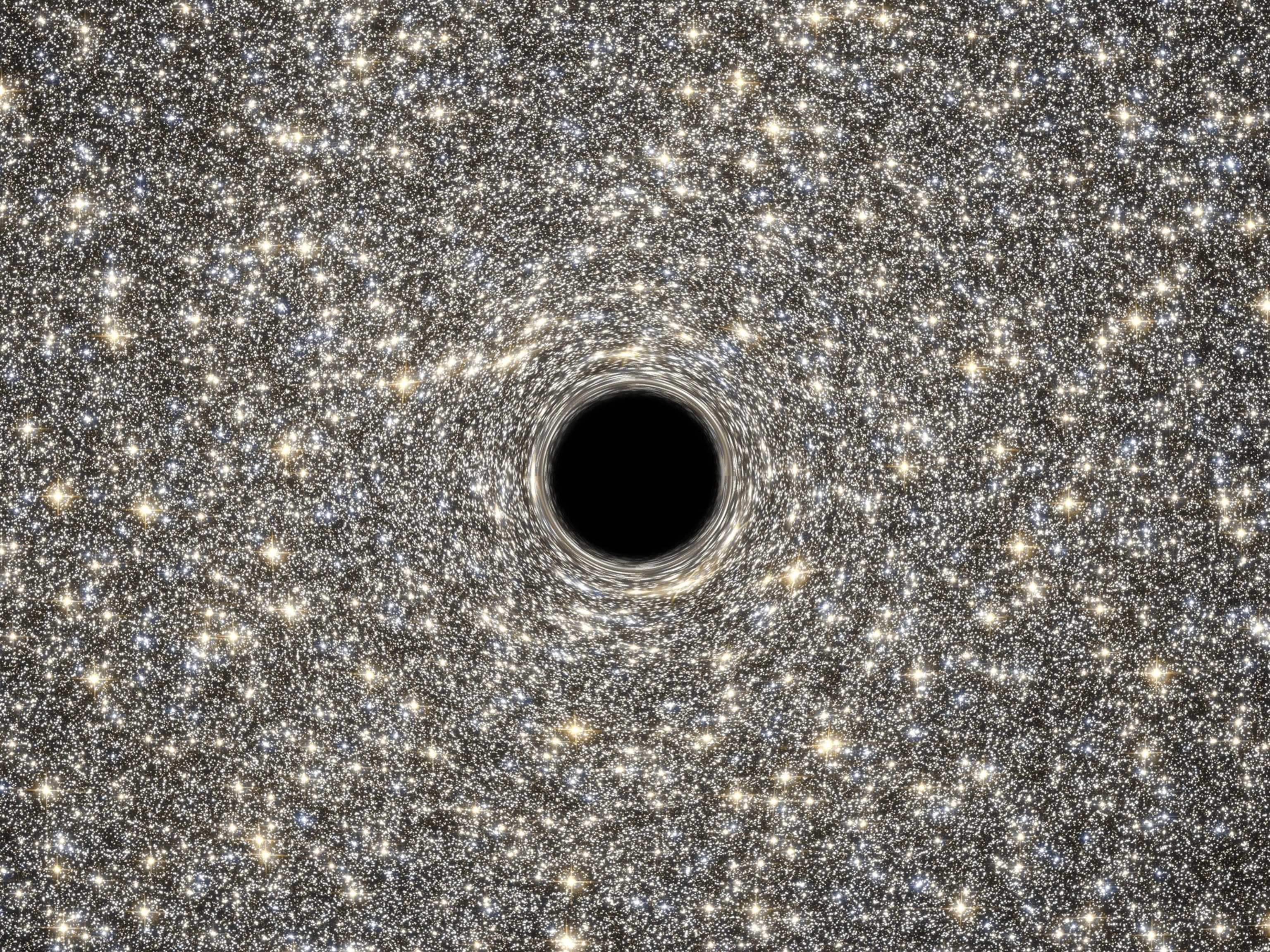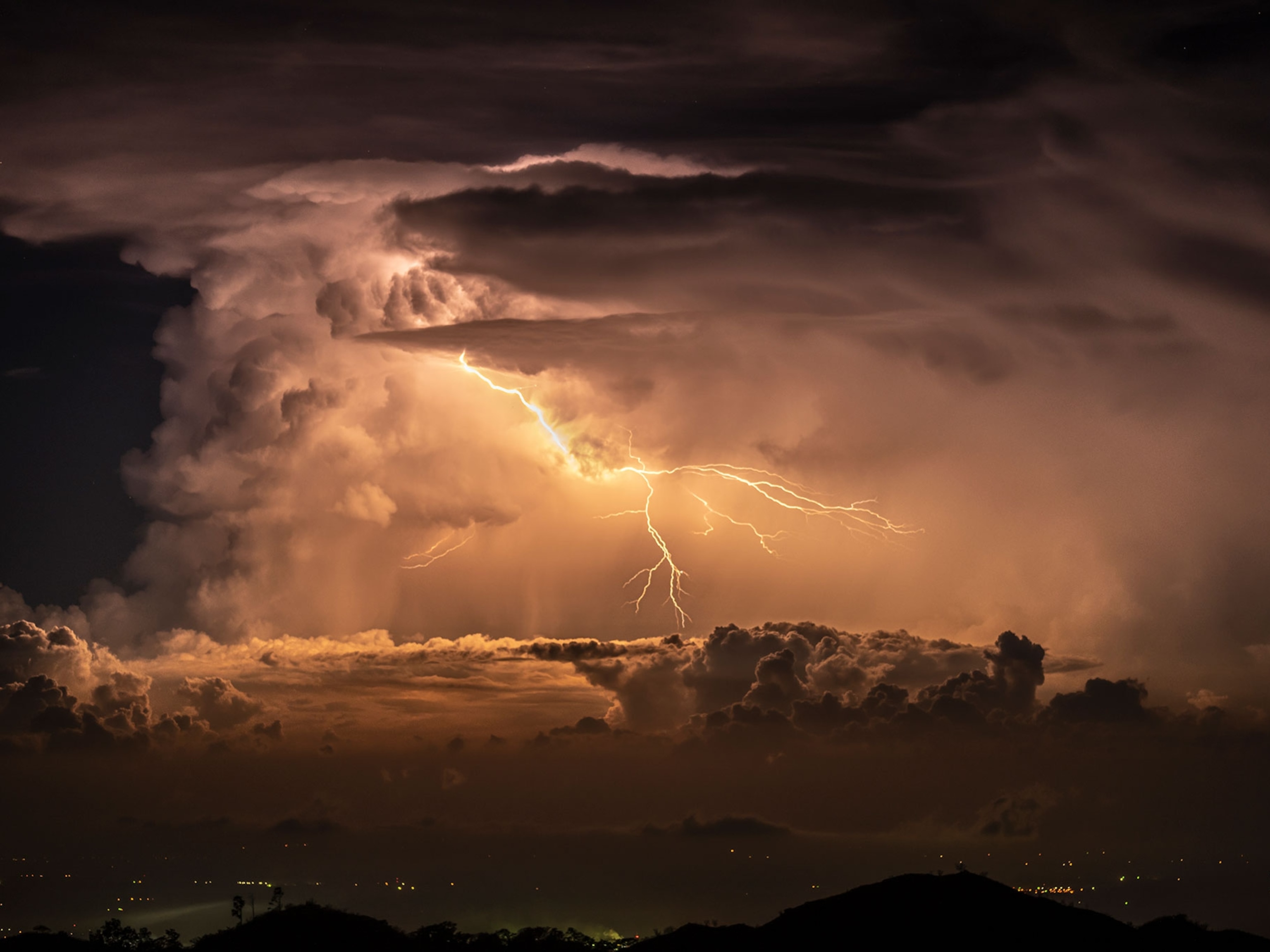
Black Hole Hosts Universe's Most Massive Water Cloud
Misty reservoir would fill 140 trillion Earth oceans, scientists say.
In a galaxy 12 billion light-years away resides the most distant and most massive cloud of water yet seen in the universe, astronomers say.
Weighing in at 40 billion times the mass of Earth, the giant cloud of mist swaddles a type of actively feeding supermassive black hole known as a quasar.
Among the brightest and most energetic objects in the universe, quasars are black holes at the centers of galaxies that are gravitationally consuming surrounding disks of material while burping back out powerful energy jets.
"As this disk of material is consumed by the central black hole, it releases energy in the form of x-ray and infrared radiation, which in turn can heat the surrounding material, resulting in the observed water vapor," said study co-author Eric Murphy, an astronomer with the Carnegie Observatories in Pasadena, California.
The vapor around this particular quasar represents enough water "to fill all the oceans on the Earth over 140 trillion times—that's a lot of water."
(Also see "Star Found Shooting Water 'Bullets.'")
Primordial Water Was Universal Coolant?
Murphy and colleagues found the wet black hole using a spectrograph attached to the ten-meter Caltech Submillimeter Observatory on the summit of Mauna Kea in Hawaii. The team also revealed that the unusually warm water cloud is bathing other gases and dust around the black hole.
In fact, there's enough gas and dust present that the black hole could grow to be 6 times its current size—or more than 120 billion times the mass of our sun, Murphy said.
Perhaps even more surprising is that the colossal cosmic reservoir formed when the universe was a mere 1.6 billion years old. (Related: "Immaculate Black Holes Found Near Universe's Conception.")
"To me, the most exciting aspect of this discovery is that it demonstrates how pervasive water is even at a tenth the current age of the universe," Murphy said.
"The fact that we have detected such a large amount [of water] at this early stage in the universe is another indication that molecules and chemical enrichment of galaxies were able to occur so rapidly after the big bang."
Astronomers are hoping to use the find to study how large quantities of water in the young universe may have acted as efficient coolants of the interstellar medium—the thin gas and dust that exists between stars—possibly affecting star formation and the evolution of galaxies such as our Milky Way.
The paper describing the watery quasar has been accepted for publication in the Astrophysical Journal Letters.





